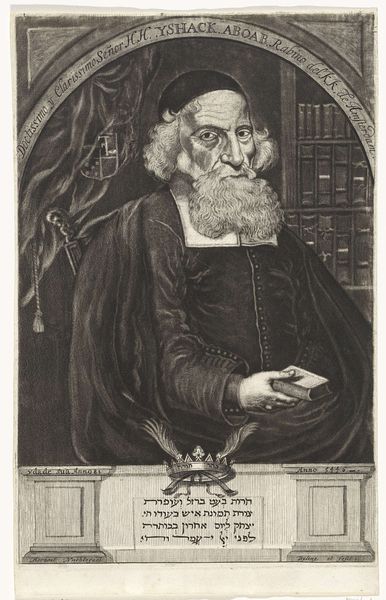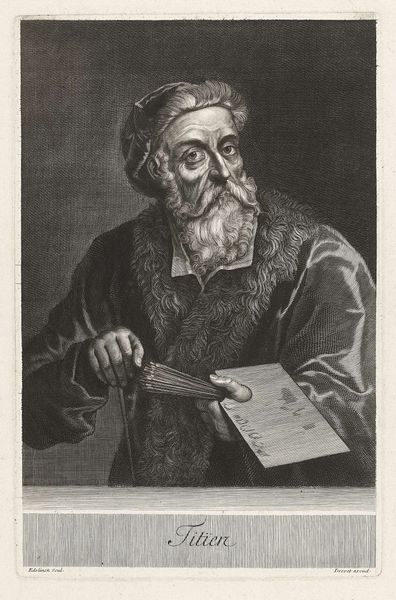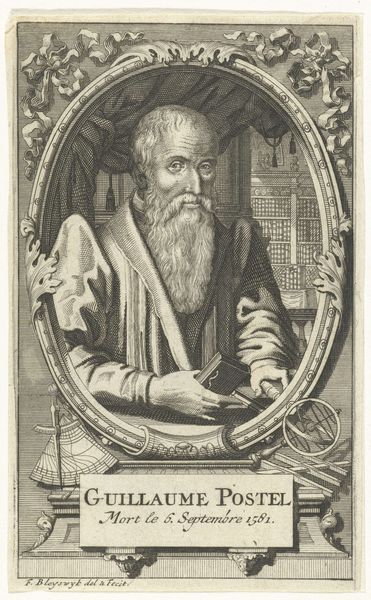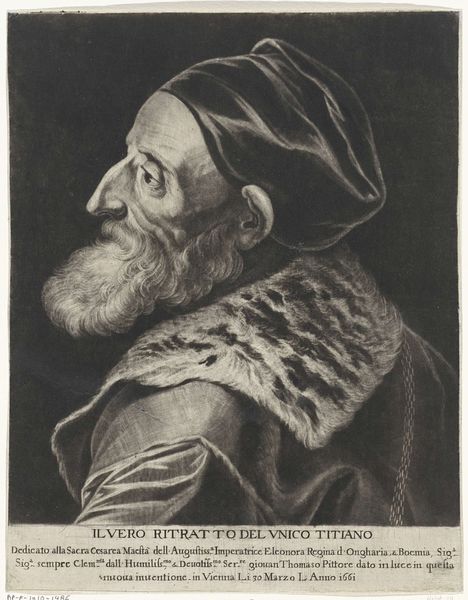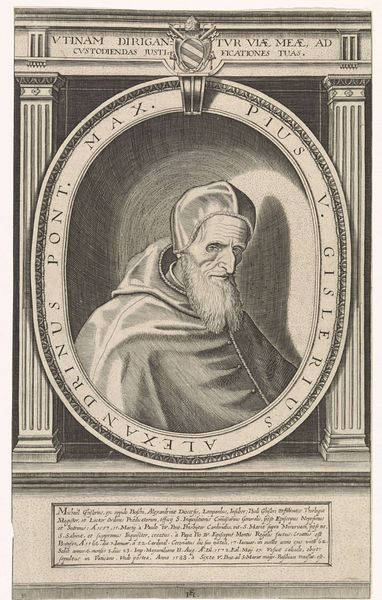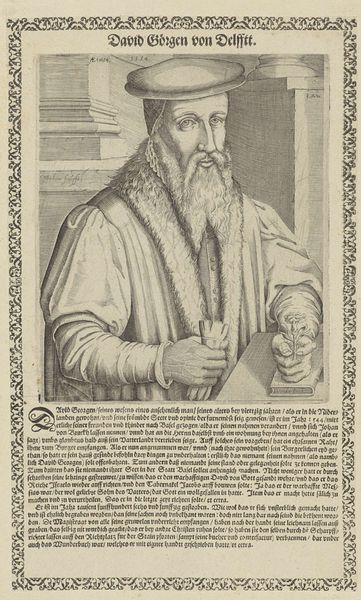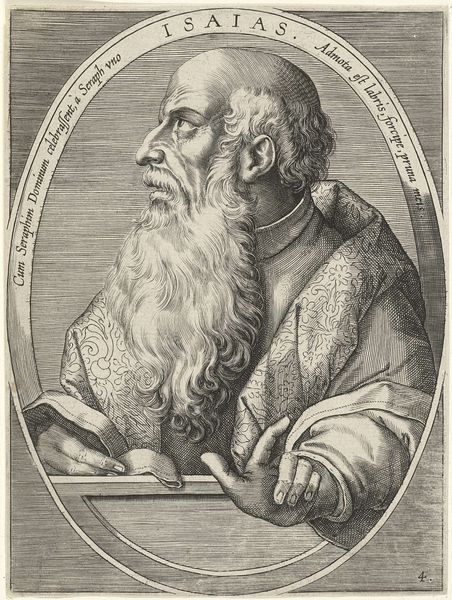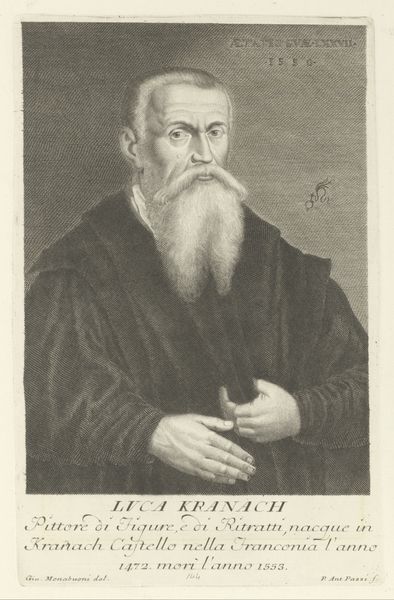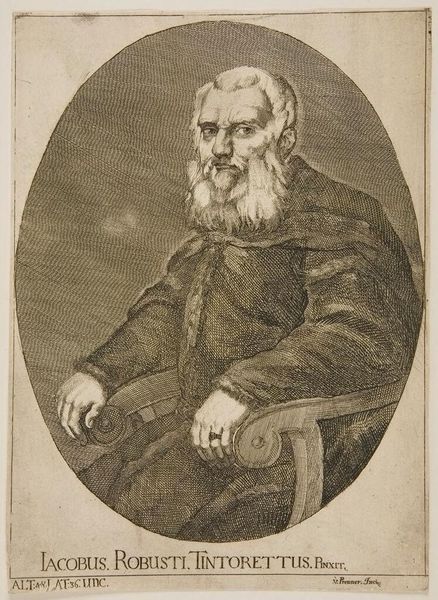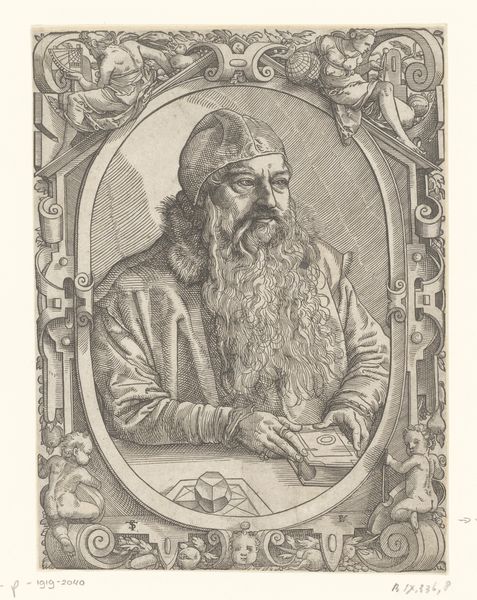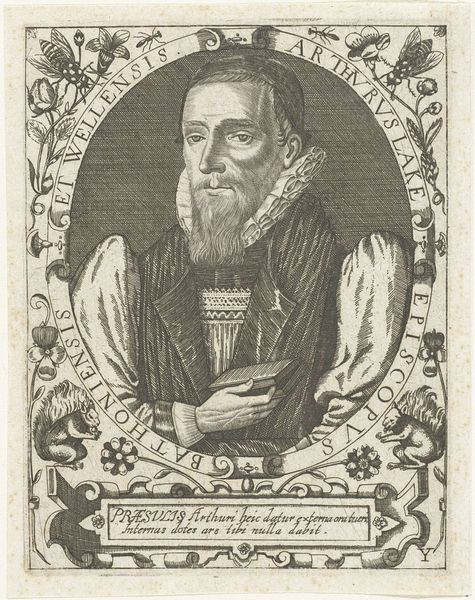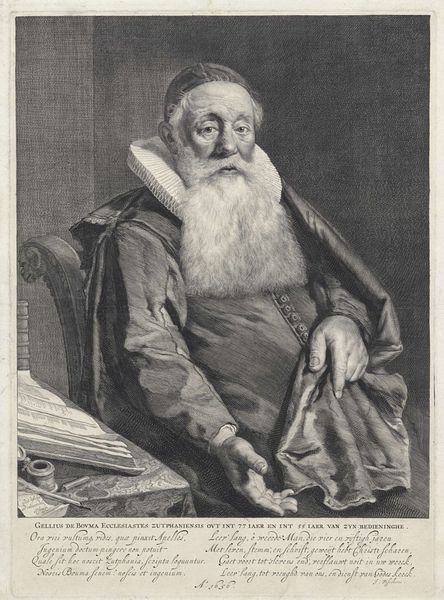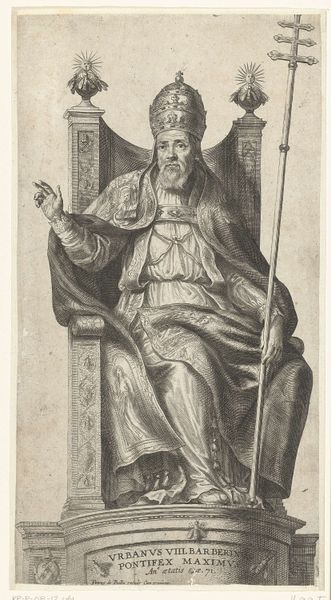
print, engraving
#
portrait
#
baroque
# print
#
book
#
old engraving style
#
academic-art
#
engraving
Dimensions: height 282 mm, width 181 mm
Copyright: Rijks Museum: Open Domain
Editor: Here we have Aernout Naghtegael's "Portret van Isaac Aboab da Fonseca," an engraving from 1686. The portrait exudes a formal and rather austere quality, amplified by the meticulous detail of the engraving. How might we interpret its historical and cultural significance? Curator: This print offers us a window into the world of Amsterdam's Sephardic Jewish community during the Dutch Golden Age. Amsterdam was known for its relative religious tolerance. Aboab was a prominent rabbi and intellectual leader of this community. Consider the inscription surrounding him, "Rabino del K.K. de Amsterdam"; it reflects not just his personal status but the institutional framework supporting Jewish life in the city. How do you see the visual elements reinforcing or challenging prevailing societal attitudes of the time? Editor: The books in the background suggest learning and wisdom, and the Hebrew inscription underlines his religious identity. I wonder if the formality of the portrait was intended to convey respectability within a sometimes prejudiced society? Curator: Precisely. Portraits such as this one became crucial in shaping the image and self-representation of marginalized communities. This wasn't just about personal fame. How did communities create narratives about themselves and disseminate these narratives in a way that challenged dominant power structures? This portrait participates in constructing and asserting communal identity and authority in the public sphere. Editor: So the choice of the portrait format itself becomes a statement? Curator: Exactly. The very act of commissioning and circulating a print like this highlights agency, doesn't it? What stories do we tell ourselves about the past? How is the act of telling stories a claim on legitimacy? Editor: I never thought about the political implications of something as seemingly straightforward as a portrait! I will definitely think differently now. Curator: It's through understanding art's connection to social power that its meanings become enriched. I will never look at it the same again, either!
Comments
No comments
Be the first to comment and join the conversation on the ultimate creative platform.
